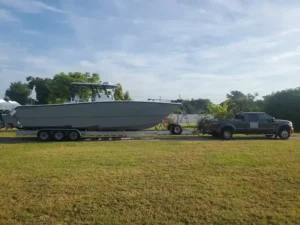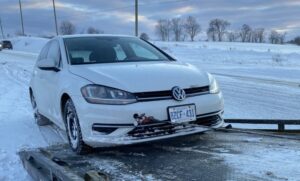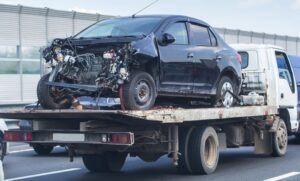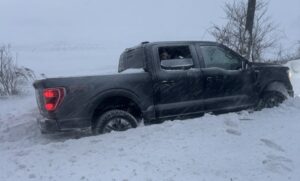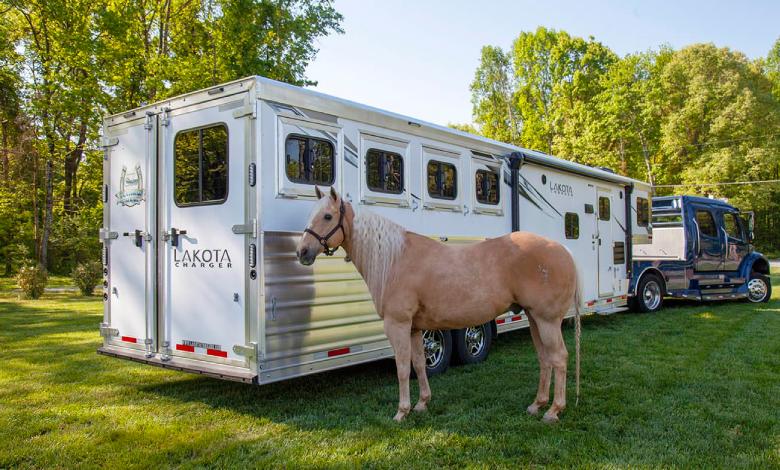Transporting a horse, whether it’s for a short trip across the Aurora area or a long-distance journey across Ontario, requires meticulous preparation, the right equipment, and careful execution. A successful horse on trailer ride is one where your equine companion arrives at the destination safe, calm, and sound. For owners in the field of towing services, like Pars Towing, understanding the nuances of safe equine transport is paramount. This ultimate guide breaks down every critical component—from vehicle and trailer readiness to loading techniques and on-road driving—to ensure the best possible experience for your horse.
- Learn More >>>> Boat and trailer towing service
I. Pre-Ride Preparation: The Foundation of Safety
A safe horse on trailer ride begins long before the ramp is lowered. The foundational steps involve ensuring the entire rig is roadworthy, your horse is prepared, and all necessary supplies are accounted for.
A. Vehicle and Trailer Readiness: The Mechanical Check
The integrity of your towing vehicle and trailer is your first line of defense against roadside incidents. Never take shortcuts on maintenance.
- Towing Vehicle Capacity and Hitch:
- Verify your towing vehicle’s capacity far exceeds the Gross Vehicle Weight Rating (GVWR) of the fully loaded trailer (trailer weight + horses + gear). A margin of 15-20% is recommended.
- Ensure the hitch class (typically Class IV or V for bumper-pull) and the hitch ball size match the trailer’s coupler perfectly.
- Install and regularly test a functional brake controller, which allows you to independently control the trailer’s electric brakes, crucial for reducing sway and ensuring smooth stopping.
- Trailer Structure and Maintenance:
- Flooring: The floor is perhaps the most critical structural component. Lift rubber mats and inspect floorboards for any signs of rot, rust, or corrosion. Rotten wood can give way under a horse’s weight, leading to catastrophic injury. Metal floors must be checked for cracks.
- Tires: Inspect all tires—including the spare—for proper inflation (check cold pressure before a trip), tread wear (replace if below 1/4 inch), and signs of dry rot or cracking. Trailer tires typically need replacement every four years, regardless of tread, due to age and potential dry rot.
- Brakes and Lights: Test all lights (running, brake, turn signals, hazards) and the trailer’s braking system before every journey. Annually service wheel bearings and brakes. The breakaway cable and its battery must be functional, as they activate the brakes if the trailer disconnects from the vehicle.
- Interior Security: Check all latches, hinges, dividers, butt bars, and breast bars to ensure they are secure and functioning correctly. There should be no sharp edges, exposed bolts, or rough textures that could cause injury.
- Cleanliness and Ventilation:
- Remove all manure and soiled bedding immediately after each trip to prevent rot and the buildup of noxious ammonia fumes.
- Ensure adequate ventilation. Trailers can heat up quickly, and poor air circulation can lead to respiratory issues like ‘shipping fever.’ Keep vents and windows open for airflow, but use window guards to prevent the horse from sticking its head or legs out.
- Lay down fresh, absorbent bedding (like shavings) for cushioning, traction, and to absorb moisture during the horse on trailer ride.
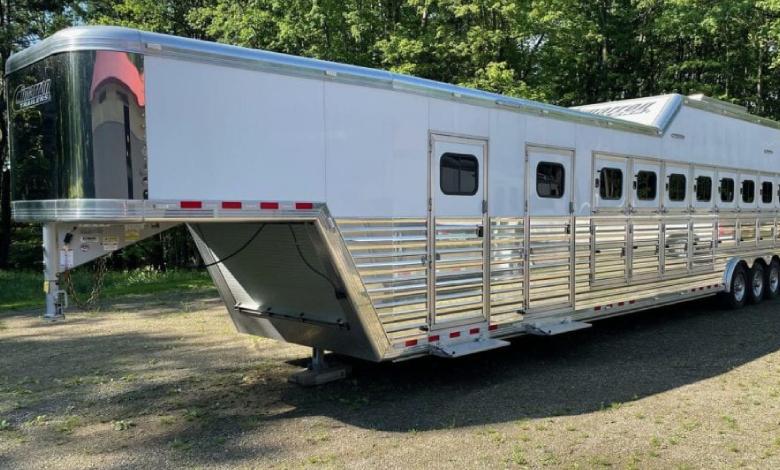
- Learn More >>>>What is Heavy Haul Trucking?
B. Preparing the Equine Traveler
Your horse’s physical and mental state directly impacts the safety of the journey.
- Training and Desensitization:
- A horse must be a confident, quiet loader and unloader. Practice the horse on trailer ride process without the pressure of an imminent trip. Use positive reinforcement (treats, praise) to reward calmness.
- A horse that struggles to load adds significant stress and danger to the process. Consistent, calm training is the only long-term solution. Never use fear or excessive force.
- Protective Gear:
- Leg Protection: Use well-fitting shipping boots or standing wraps and bell boots to protect the horse’s legs from trauma and injury during the horse on trailer ride. Ensure wraps are applied correctly and boots are not too hot for long journeys.
- Head Protection: A head bumper is recommended for horses prone to throwing their heads up, protecting the poll.
- Halters and Ties: Always use a sturdy, well-fitting halter. A leather halter is preferred, as it is designed to break under extreme pressure in an emergency, or use a breakaway tie device or quick-release knot.
- Blanketing: Blanket conservatively based on the weather. Remember that the inside of a trailer can be warmer than the outside air, and a horse exerts energy balancing, which can cause sweating.
- Packing Essentials:
- Pack an equine first aid kit, extra water and a familiar bucket (some horses won’t drink strange-tasting water), hay nets (tied high to prevent entanglement), and any required travel documents (e.g., Coggins test, health certificate).
- For the driver: high-visibility vest, flares/warning triangles, mechanical emergency supplies (jack, tire iron, wheel chocks, jumper cables), and a fully charged cell phone.
- Learn More >>>>Towing Service Near Me: Your Essential Guide
II. The Loading Process: Calmness is Key
Loading is the point of highest risk for both horse and handler. The atmosphere must be calm, patient, and unhurried.
- Safe Loading Environment:
- The trailer must be securely hooked to the towing vehicle with the parking brake set. A disconnected trailer can tip dangerously under the shifting weight of a horse.
- Choose a level, non-slippery area with ample space for the horse to approach and manoeuvre around the trailer.
- Open all doors, windows, and dividers to make the interior as light and inviting as possible.
- Technique and Securing:
- Lead the horse straight into the trailer. Maintain a confident, patient demeanor.
- If using a straight-load trailer for a single horse, load the horse on the driver’s side to help balance the weight against the road’s camber (the slight slope for water drainage). For two horses, load the heavier horse on the driver’s side.
- Crucial Safety Rule: Secure the butt bar, rear door, or ramp behind the horse before tying its head. If a horse pulls back while tied and the rear is open, it can panic and be severely injured.
- Tie the horse using a quick-release knot or safety snap. The tie rope must be long enough to allow the horse to lower its head (essential for respiratory health and balance) but not so long that it can turn around or get a leg caught in the rope or hay net. Hay nets must be secured at chest height or above.
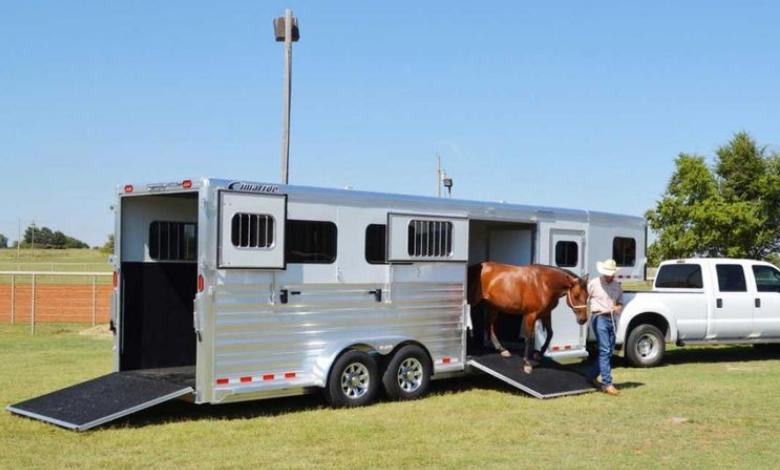
- Learn More >>>>Boat and trailers towing Ajax
III. On the Road: Driving for the Horse on Trailer Ride
Driving a truck and a horse trailer is a unique skill that demands a defensive and gentle approach.
- Driving Style:
- Gentle Acceleration and Braking: Every maneuver should be gradual. Sudden stops, starts, or sharp turns force the horse to scramble for balance, causing stress, fatigue, and potential injury. Pretend you have a cup of water on the dashboard—you should drive without spilling a drop.
- Speed and Distance: Drive slower than you normally would. Maintain a significantly increased following distance to allow for the longer stopping time required by the weight of the trailer.
- Turns: Make wider turns to ensure the trailer wheels clear curbs and obstacles. Use side mirrors frequently to monitor the trailer and your horse if you have an interior camera.
- Route Planning and Breaks:
- Plan your route to avoid busy city centers, tight turns, or excessively steep grades whenever possible.
- Rest Stops: For long-distance trips (over 3-4 hours), regular rest stops are vital. Stop every 3-4 hours to allow the horse to stand still and offer water. For journeys over 12 hours, plan for an overnight stop at a horse motel with a minimum of eight hours of rest, including unloading and walking to stretch muscles and promote circulation.
- Inspection Stops: Use stops to visually check on your horse and the trailer rig: check the temperature inside the trailer, re-check tire pressure/temperature, and ensure all latches and ties are still secure.
IV. Arrival and Unloading: The Final Stage
The end of the journey must be as calm and careful as the beginning.
- Safe Unloading Area:
- Park on level ground in a quiet, safe area, away from traffic and noise.
- Always ensure the trailer is securely hitched and the parking brake is set before starting the unloading process.
- The Reverse Process:
- Crucial Safety Rule: Untie the horse’s head before lowering the ramp, unfastening the butt bar, or opening the back door. This prevents the horse from pulling back while restrained, which can cause severe neck and poll injuries.
- Ask a helper to unfasten the butt bar or back door.
- Guide the horse quietly backward off the trailer. Never allow the horse to rush down the ramp.
- Learn More >>>>Boat and trailers towing clarington
V. Pars Towing: Your Trusted Partner in Ontario
Safe equine transport requires not only diligence from the horse owner but also a reliable, well-maintained towing vehicle and, in times of need, professional assistance. As a towing service operating in Ontario and serving the Aurora area, Pars Towing understands the unique needs and high stakes involved in horse on trailer ride emergencies. From trailer-specific roadside assistance to ensuring your vehicle has the capacity for safe towing, our commitment is to the safety of all road users, especially those traveling with precious cargo like horses. Trust in proper preparation, drive with care, and partner with a local towing expert who prioritizes your safe journey.

